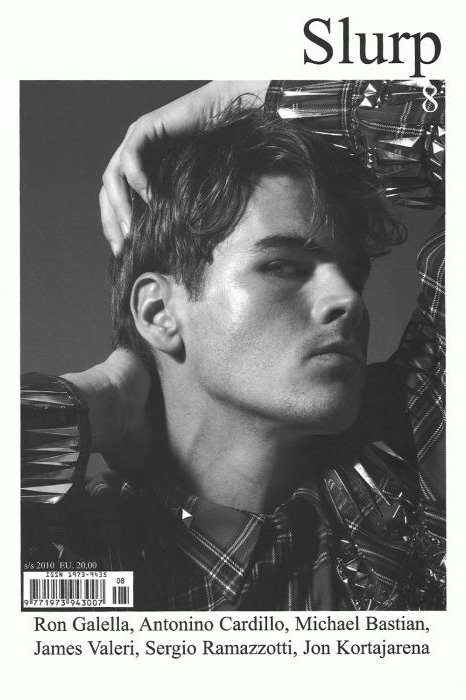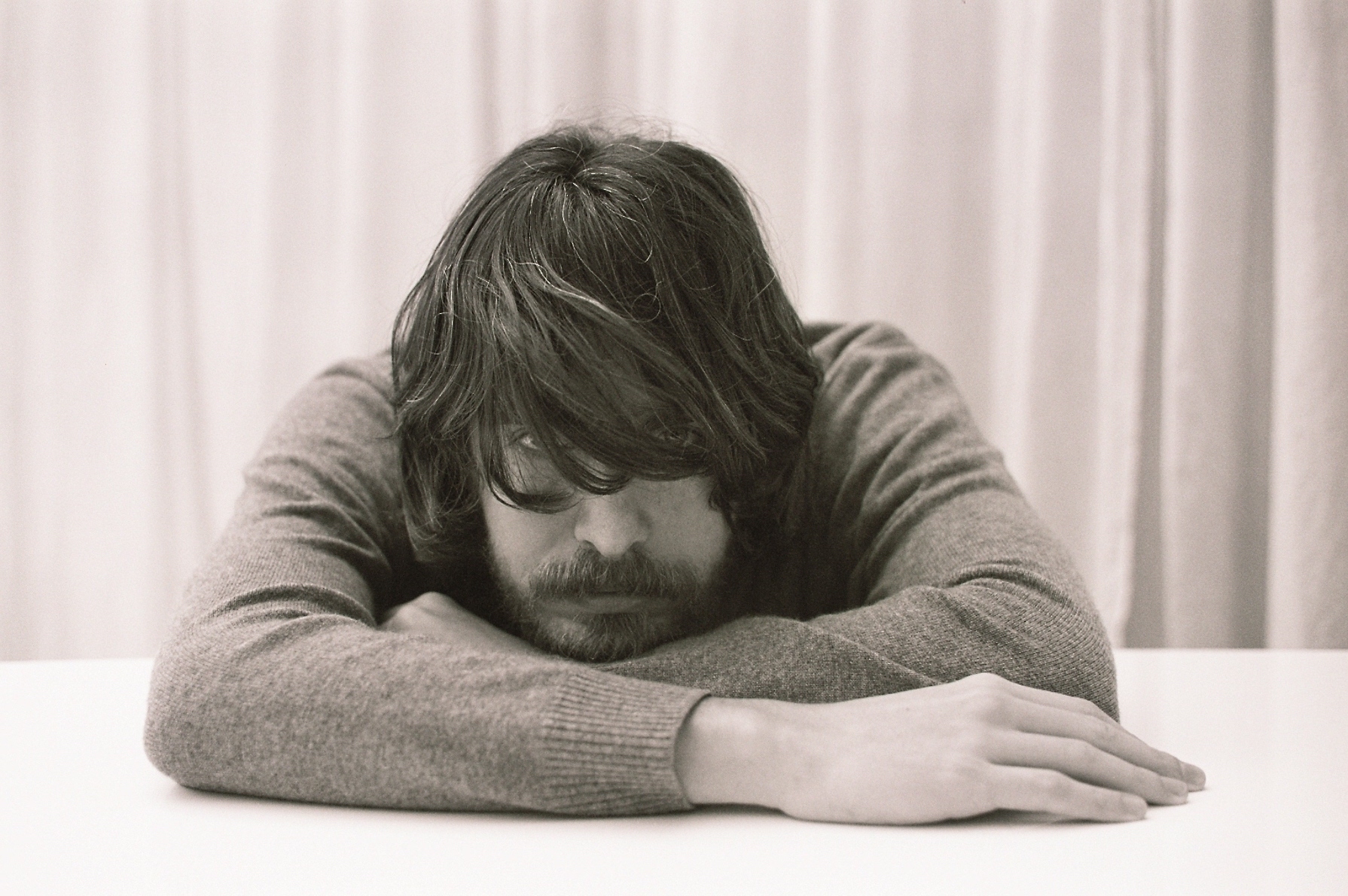
Interview
Antonino Cardillo, with Roberto Santoro
Worldwide hailed as great talented, he’s conducting his architectural research with inflexible ethic and aesthetic coherence. He design space as if he composed music. He’s an artist: and his architecture is a heartfelt architecture.
RS: “Dear Antonino, the spaces you create immediately raise a particular essential impression: a sort of deep wide breath.”
AC: “That’s interesting! Ten years ago I drew a plan through which I sampled for the first time dualism between fluid elements and rigid parts. I was listening to Pink Floyd’s The Dark Side of the Moon and I called that plan ‘Breathe’. Someone said that my spaces imposed silence; others observed that my houses looked like bunkers, inside which light separates the things of architecture, dilating them. In a certain way, light is for a building just as air that permeates our bodies: I could state architecture inhales light.”
RS: “What does exactly mean ‘to design a space’?”
AC: “It means to give shape to an idea. What’s in your mind is often confused. A careful and ponderous drafting is necessary to let it shape perfectly. At the end of this process, I always find myself surprised as the result couldn’t be otherwise: as if the work was still existing somewhere and I just had to bring it to light.”
RS: “What kind of relations do you think exist between the function a building or a space is designed for and its future purpose, its everlasting permanence on Earth? How much do you look at its immediate dimension and how much at its eternal essence?”
AC: “Function is nothing but a pretext. Architecture—in the full meaning of this word—is unconstrained by contingent matters and fully able to convey values transcending the time and the day-to-day. Architecture is not fashion.”
RS: “Architecture is art: to be an architect means to be an artist.”
AC: “Unfortunately there’s a serious misunderstanding about architecture: nowadays one only needs some skills qualifications to obtain the title of architect. In our collective imagination, it raises expectations and so, therefore, we think any architect should be an artist. I think this kind of bureaucratic title is totally nonsense. Such as a student of philosophy won’t necessarily become a philosopher, a student of architecture won’t become an architect. His works will rather display his title’s value, not just his academic skills, nor a legal qualification. Anyway, even if rarely, I firmly think architecture is art.”
RS: “You often talked about music: another essential impression I receive in looking at your buildings, is that of a space designed in a symphonic way, rhythmically, with beats, pauses, various tones… As if a sort of rhythm defined the space.”
AC: “Each building I’ve designed is an attempt to transliterate music into space. When I listen to Mile Davis’ Biches Brew I often see some glares in the darkness and I say to myself: “That is architecture!” I’m thinking of the harmonic change in Pink Floyd’s ‘Shine on You Crazy Diamond’, clavichord’s evocations of Keith Jarrett’s works, the planned potency of Kraftwerk, the restless and surreal sceneries in David Bowie’s Low, the futurist mantra in Beatles’ ‘Tomorrow Never Knows’, the hybrid structures of Caetano Veloso’s Transa, the futurist fantasy in Genesis’ Selling England by the Pound, the windy and modal atmosphere of Jan Garbarek’s Dis, the gloomy sci-fi of Portishead, the ghostly and disharmonic minimalism of Radiohead’s Kid A.”
RS: “The 53rd Venice Biennale featured Ulla von Brandenburg’s latest 16 mm film installation, Singspiel. She dealt with the topic of spaces not designed according to a usage feasibility, but to an architectural abstract aesthetic instead: uninhabitable spaces may cause lack of communication among the human beings living in there. For this purpose, she addresses Le Corbusier’s Ville Savoye. So, do you think it is more important to define your architectural research on the container or rather on the contain?”
AC: “Some time ago I was at Sarnıç’s, a subterranean restaurant in Istanbul, built inside an old Byzantine cistern. I was so fascinated by that space and I realized a building is great when its spaces are eloquent insomuch that they can resist the changes of their primal purpose.”
RS: “In your opinion, does architecture have any social valiance or power? Can we say architecture has a social mission?”
AC: “Architecture is a paradox. In the past, architecture was the art of power, but, with the passing, all the blood shed to realize those great buildings seems to have been washed away. I think this essential and constitutional essence of architecture, equally constituted by violence and beauty, makes itself the most emblematic among the other arts to represent the very human nature. In my opinion, I don’t think beauty makes people good-natured and, by the way, I think art shouldn’t have any didactic purpose.”
RS: “You were born in Erice, one of the most fascinating and well-preserved Middle Ages towns in Sicily, and you studied in Palermo, a city of rare beauty where historical and cultural stratifications are instead enormous and magniloquent. How present and past can/must coexist?”
AC: “Contamination, meant as a state of permeability to differences, acquisition and synthesis, is the ultimate purpose of my research. Living in Palermo I got an understanding of the sense of history, but especially in Palermo I could breathed those possible futures which never rose up, remained on the contrary latent in stones, in the ground and in people’s bodies.”
RS: “How much clout do consciousness and knowledge of the past have in your creative process?”
AC: “Much clout. Re-elaboration of the past is the raw material of my research.”
RS: “How would you define yourself? Modern? Contemporary?”
AC: “I think both of these two labels are obsolete. The word modern is completely absorbing, demands a sort of exactness of operating which rules out any other possibility. The word contemporary demands once more a temporal chartered placing: that of present. My ambition? I want to be a continuer of stories, especially of any possible story cut off by the violence of history. Being modern and being contemporary have nevertheless been an essential part of my creative character building: I only try to give them a relative value in what I do.”
RS: “Do you think that exists just one future? Or there are various possible ways?”
AC: “I think the future does not exist. Various futures do exist. Futures are the possible developments of a given present time, still produced by the way in which the players of the present re-elaborate their own past. One hears a lot of talking about everything has already been invented. I think this is a typical paradox of modernity, which gives excessive worth to novelty rather than to the actual value of something: the latter becomes a minor detail. This way of execution produces a contemporariness marked by short and ephemeral seasons made of shallow reassessments of what has already been. Thus, without a critical re-elaboration of previous experiences, one is reduced to reiterate the same ways compulsively and unconsciously. Obsession for novelty inhibits a real research and, making a severance between our past and ourselves, restrains our critical skills and reduces history to a mere tank of interchangeable stuff.”
RS: “What city best suits your urban and architectural idea?”
AC: “I’m interested in those cities where the space seems to be improvised and reinvented by a creative interaction of their inhabitants. Among those I’ve visited and loved, I recall Marrakech, Istanbul, Havana and Berlin. Now I live in Rome, also if it’s not nowadays Rome that I’m interested in.”
RS: “So why in Rome?”
AC: “Rome has a fragmentary structure, given by an extremely wide and complex historical stratification. Thus I think its urban essence is more interesting and communicative than other cities. Here’s why I live in Rome: I’d say it’s more a kind of historical-aesthetic interest.”
RS: “Do you think it would still be possible to recreate a classical canon just as stylistic features of Greek, Roman and Renaissance architecture has been? I mean a reference model for future architecture?”
AC: “I don’t believe in languages. Not even in styles. I’m not interested in defining a transmittable code. Still codes fascinate me, but for another reason. Your question recalls me the experiences of Le Corbusier and Palladio (and, in the wider sense, of Late Antiquity). During their whole lives, they attempted to codify their own architecture, but in masterpieces of their maturity they felt the need to ‘profane’ their own code. And yet what we have inherited of their art is that part that may be codified. I’m thinking of English and American neo-Palladian or also of the New York Five, obsessed by Le Corbusier’s first period. The greatest works of Le Corbusier and Palladio (or those of Late Antiquity) continued nevertheless to be a silent will for most of people: latent potentialities, hard and enigmatic to be interpreted, but, in my opinion, much more interesting.”
RS: “Can we say there is an affinity between architecture and cinema? They both create a ‘space’, fictitious or real…”
AC: “Architecture is a process. Its transient structure lives on user’s perception. Architecture is not something bound and determinate, it is made by multi-sided possible interpretations given by a user who continuously re-invents its meaning going through and standing in it. Contrary to a painting or a sculpture, architecture has various potential levels of meaning: it’s up to the user to reveal them. I could say the same to define cinema.”
RS: “It should be unbelievably exciting to see something that sprang out of your own mind raising and becoming reality: how does it make you feel? Enthusiasm? Self esteem? To see our dreams or our wishes taking a shape can often make us less happy than we had imagined.”
AC: “Each work is like my own child. But unlike a real child, architectures immediately live their own life and leave home too early. I think an architect’s biggest joy is to share his work. It would be a real pity if architecture belonged to his legal owner. This kind of sharing can often be only through substitutes, like architectures’ pictures: but even though only imagined, architecture still remains architecture.”
RS: “Your most foolish and unrealizable project?”
AC: “To build up a twenty-five floors tower of travertine marble on Tiber embankment, right in front of Richard Meier’s Museum of Ara Pacis.”
RS: “Which piece of architecture among those you’ve designed up to now would you prefer to live in? Why?”
AC: “In each of the houses I’ve designed, I’ve explored several aspects of my identity. I’ve often discovered some aspects of myself I couldn’t even have imagined. I’m not attached to one house in particular, but the research behind each of them is firmly linked to my life: my works are often portraits of the people I’ve loved.”

Cardillo in his house in Rome, 2010. Photography: Roberto Santoro